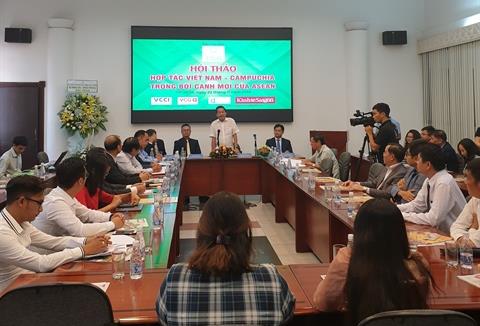
There is still much untapped potential for co-operation in agriculture, aquaculture and food processing between Viet Nam and Cambodia, Oknha Leng Rithy, a senior advisor to the Cambodian Government, told a seminar in HCM City on Friday. — VNA/VNS Photo
There is still much untapped potential for co-operation in agriculture, aquaculture and food processing between Viet Nam and Cambodia, Oknha Leng Rithy, a senior advisor to the Cambodian Government, told a seminar in HCM City on Friday.
As neighbours, Viet Nam and Cambodia have huge potential and advantages in trade and investment, he said.
According to Tran Trung Nam, an economist, the two have many similarities in terms of culture, market demand and consumer habits, which means Vietnamese goods and services are well-regarded in the Cambodian market.
Besides bilateral agreements, ASEAN trade deals also connect the two economies, and they should work together in sectors like consumer products, energy, mining, aquaculture, and forestry.
Border infrastructure has been improved as well, creating favourable conditions for the two countries’ businesses and people living along the border to foster trade and investment, he said.
Government agencies and local authorities in the two countries should regularly organise meetings and exchange delegations to strengthen understanding and resolve economic and trade difficulties, he added.
To better tap the bilateral economic potential, he said the two sides should maintain a more open business and investment environment and complete their legal framework for collaborative activities particularly by their small- and medium-sized enterprises, and simplify administrative and investment procedures.
According to the Ministry of Planning and Investment, Viet Nam had invested nearly US$2.8 billion in Cambodia as of September, the third highest out of 76 countries and territories.
Cambodia has invested $63.7 million in Viet Nam, mostly in agro-forestry-fisheries, trade, transportation, manufacturing, and processing.
Bilateral trade between the two countries is forecast to reach $5 billion from now to 2020. – VNS